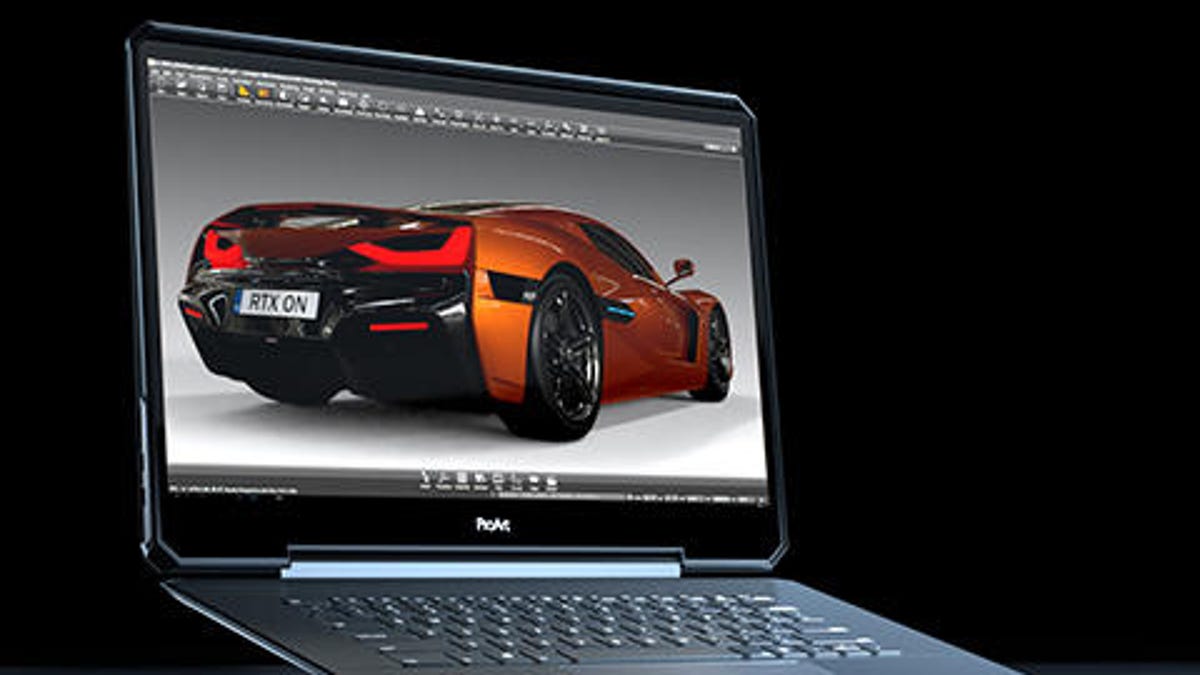Asus' StudioBook One laptop closes the performance gap with desktops
And how do you keep the Quadro RTX 6000 cool? Put all the components behind the display and use titanium to dissipate heat.
Have you been waiting for a powerhouse Titan RTX-class graphics processor to make its way into a 15-inch laptop? Well, Nvidia and Asus crammed the workstation equivalent, the Quadro RTX 6000, into a relatively small space just for you. Asus' new ProArt StudioBook One is the first laptop (ahem, mobile workstation) based on Nvidia's Ace reference design, which puts all the heat-generating components behind the display to keep the keyboard section from frying your lap.
It hasn't been long since Nvidia announced its Quadro RTX 5000, its most powerful mobile workstation GPU to date, and now it's already been eclipsed. In addition to offering certifications for video production, computer-aided design and more professional software packages -- certification means it's been tested for stability and compatibility -- workstation GPUs are performance-optimized for those things the way gaming cards are optimized for frame rates.
Nvidia claims that the mobile version of the GPU performs the same as the desktop version; normally, the mobile versions of GPUs are throttled compared with their desktop siblings because of heat. The StudioBook One has thin Titanium-based vapor chambers for circulating air, which the company claims dissipate heat better, and a 90Wh battery tucked into the laptop's 25mm thickness.
Among the heat-generating components: a Core i9 processor (likely the i9-9980HK), 64GB of DDR4 RAM, 24GB of VRAM on the GPU and a 1TB solid-state drive (SSD). Though the hot stuff isn't under the keyboard, it still uses Asus' ErgoLift hinge, which tilts the base to 4.57 degrees to allow airflow around the base.
The laptop also debuts an enhanced version of Nvidia's Optimus technology, which automatically handles switching between the integrated GPU and discrete GPU in a laptop to extend battery life. (Or, as I tend to think of it, the technology that prevents me from forcing everything to run on the discrete GPU.) Nvidia says it's smarter about autodetecting applications that would benefit from (or need) the discrete GPU.
No one's mentioned battery life for this monster, but it's likely that it won't be great even with improved Optimus. It comes with a relatively compact (92mm square, 28mm thick or 3.6x3.6x1.1 inches) 300-watt power adapter.
Up top is a 4K 120Hz display that's factory-calibrated and Pantone-validated and covers 100% of the Adobe RGB color space (97% DCI-P3).
The StudioBook One headlines Nvidia's IFA announcements of new RTX Studio systems, which now get some desktops -- Asus' ProArt Station D940MX and ProArt PA90, Acer 's Concept D 900 and 500 and the MSI Prestige P100. Newly inducted laptops include the Asus ProArt StudioBook Pro X (which brings the company's Screen Pads to its workstation-class systems), ProArt StudioBook 17 and 15, and Acer's Concept D 5 Pro and D 5.


